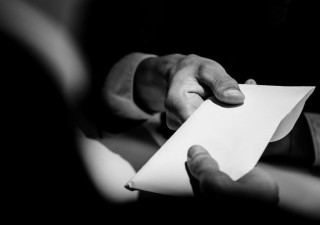What is so inventive about the invention?
30 November 2022

Inventive step has long been the main stumbling block for inventors seeking a patent for their invention. Manisha Singh and Aditya Goel explain how a recent case in India has determined that no matter how simple an invention might appear, it could still be inventive.
The most formidable test that an invention must undergo before being awarded a patent is the test of inventive step. The complexity underlying the question of non-obviousness of technical improvements and perplexing legal principles that determine an inventive step has always baffled inventors. This cannot be captured more aptly than by the famous quote “The inventive step requirement makes a lawyer out of an inventor” by Kalyan C. Kankanala in Fun IP, Fundamentals of Intellectual Property.
But a recent decision in Avery Dennison Corporation v. Controller of Patents and Designs has brought together those legal principles involved in determining an inventive step and disentangled them to hold that no matter how simple an invention might appear, it could still be inventive.
An invention can be granted a patent only when it falls within the meaning of “invention” under Section 2(1)(j) of the Patents Act, 1970. Section 2(1)(j) states that “invention means a new product or process involving an inventive step and capable of industrial application”. Therefore, before an invention can be granted a patent in India, it must have “novel features” and an “inventive step” which can be industrially applied. The test of novelty is an objective one as compared to the test of inventive step. Section 2(1)(ja) of the act defines inventive step as a feature of an invention that involves technical advance as compared to the existing knowledge or having economic significance or both and that makes the invention not obvious to a person skilled in the art. In other words, inventive step is a test that ensures that novel features of an invention are not trivial and add a non-obvious technical advance.
But how can one assess inventive step is an issue which has not only troubled courts but also patent controllers and examiners, who deal with this issue more often than the courts do. The principles to determine inventive step have evolved over the years from the decisions of courts/authorities around the world. It is a question of what is obvious to a person skilled in the art, who is not creative or experimental. The tests to determine whether an invention has an inventive step or not vary from one jurisdiction to another. but the underlying principles remain the same. Since the issue of inventive step is a mixed question of law and fact, it also depends on the facts and circumstances of each case.
Avery has bundled various tests on inventive step from different jurisdictions. For instance, the European Patent Office follows the problem and solution approach, which assumes that every invention is a solution to a problem. This assessment is evidence-based, and prior art documents are usually combined by examiners to dispute the inventive step. Another test is the could-would approach, which is followed by Japan, which is based on subjective test of determining whether the prior art as a whole would, but not simply could, have prompted a skilled person, with the knowledge of the technical problem, to modify or adapt the closest prior art to arrive at the subject matter of the claims. Another test for determining existence of inventive step is the test laid down by U.S. Supreme Court in KSR International v. Teleflex wherein it was held that there should be teaching, suggestion and motivation from the prior art to combine the prior art references to arrive at the claimed invention for an invention to be considered obvious.
In Avery, the Court relied upon the decision of the House of Lords in Windsurfing International Inc. v. Tabur Marine Ltd., which laid down a four-step test to determine whether a patent satisfied the requirement of inventive step and lack of obviousness. It also relied upon the Division Bench judgment of the Delhi High Court in F. Hoffman-La Roche Ltd. And Ors. v. Cipla Ltd. that laid down five steps process to determine inventive step in an invention, which are reproduced below for ease of reference:
-
“Step No. 1, To identify an ordinary person skilled in the art,
-
Step No. 2, To identify the inventive concept embodied in the patent,
-
Step No. 3, To impute to a “normal skilled but unimaginative ordinary person skilled in the art” what was common general knowledge in the art at the priority date,
-
Step No. 4, To identify the differences, if any, between the matter cited and the alleged invention and ascertain whether the differences are ordinary application of law or involve various different steps requiring multiple, theoretical, and practical applications, and
-
Step No. 5, To decide whether those differences, viewed in the knowledge of [the] alleged invention, constituted steps which would have been obvious to the ordinary person skilled in the art and rule out a hindside approach.”
Although the guidelines laid down in various decisions help greatly, there is no fixed formula to evaluate inventive step and each invention is to be evaluated differently considering different parameters. There may also be some non-technical facts that impact determination of inventive step. In other words, there may be some secondary considerations or objective indicia of non-obviousness. The most common secondary consideration includes commercial success, long-felt need, failure of others or copying of the invention by competitors, unexpected results, teaching away by others, professional approval or scepticism by expert or praise by others. The Delhi High Court in Bristol-Myers Squibb Holdings Ireland Unlimited Company v. BDR Pharmaceuticals International Pvt. Ltd. summarized the principles that can be used to determine whether an invention is obvious or not. The said principles are illustrated below:
-
“A hindsight reconstruction by using the patent in question as a guide through the maze of prior art references in the right way so as to achieve the result of the claim in the suit, is required to be avoided.
-
The patent challenger must demonstrate the selection of a lead compound based on its promising useful properties and not a hindsight driven search for structurally similar compounds.
-
There should be no teachings away from the patent in question in the prior art.
-
Mere structural similarity cannot form the basis of selection of lead compound in a prior art and the structural similarity in the prior art document must give reason or motivation to make the claim composition.
-
Though mosaic of prior art documents may be done in order to claim obviousness, however, in doing so, the party claiming obviousness must be able to demonstrate not only the prior art exists but how the person of ordinary skill in the art would have been led to combine the relevant components from the mosaic of prior art.
-
It has to be borne in mind, small changes in structures can have unpredictable pharmacological effects and thus, structural similarity alone is not sufficient to motivate to selection of the lead compound.
-
Though it would be tempting to put together a combination of prior arts, but this requires a significant degree of hindsight, both in selection of relevant disclosures from these documents and also in disregarding the irrelevant or unhelpful teachings in them.”
The list of factors that must be analyzed for determining an inventive step is still expanding either by way of court precedents/authorities or by amendment of the statutes. In Avery, even simple inventions have been held to be patentable. An invention developed with a simple change made to the earlier known product or process may possess inventive step if the same change demonstrates technical advancement over the prior art on the priority date of the application. Therefore, it is important for the examiners, who examine the patent application, not to be influenced by the simplicity of the invention. The examiners have to analyze if that simple change brings technical effect or technical contribution amounting to a non-obvious technical advance as compared to the existing knowledge. It is to be kept in mind that even simple inventions may revolutionize the industry. For example, a wheel has been a simple but revolutionary invention only due to its shape.
Avery related to a patent application for a ‘notched fastener’, which is configured for enabling enhanced precision and uniformity in the feedings of the fastener to a needle assembly of a fastening system. The appellant argued that the patent application had inventive step because of the features, such as creation of the notch, position of the notch, shape of the notch, direction of the notch and the technical advancement was based in overcoming the variation in the length of the fastener being cut due to elasticity. Whereas the respondent relied upon prior art to argue obviousness and further argued that a mere change in shape or position of the notch in the subject application would be obvious to the person skilled in the art. The respondent further alleged that the patent application was a mere workshop improvement for a person skilled in the art.
It was held that the comparison between the fastener stock in the prior art and the patent application would show that in the subject patent, the tearing off of the fastener from the continuous roll and the manner in which the notch was positioned, was different. In the case of the subject patent, there was proper alignment between the notch and the manner in which it was torn from the roll. However, in the prior art, there is a possibility of the tearing resulting in irregular cutting. The subject patent solved the problems which were in the prior art and addressed inconsistencies while cutting or severing of the fastener from the fastener stock, reduction in the size of the side members and variation in the cuts and the locations thereof. It was held that even simple inventions are patentable, and it was not permissible to do a hindsight analysis or an ex-post facto analysis.
The said principle also finds mention in an old judgment of the Kolkata High Court in Ernest Bruno Nier and Ors. v. George Reinhart and Ors., wherein it was observed that when it was necessary to make modifications in the form or construction of all or any of the separate old integers included in the combination in order to ensure their more perfect interaction, there is a strong presumption that there has been an invention. It was also observed that the patent can be granted even when the “invention” follows upon a happy accident or is the result of an experiment. It was also observed that it is immaterial whether the “invention” comes into existence by accident or by design. Still, on the other hand, there must have been some inventive step, even though the inventive step is but slight.
Additionally, the judge in Avery observed that the weightage to the time gap between the prior art document and the invention under consideration should be given while determining the inventive step in the invention. It was observed that if a long time has passed since the prior art was published and a simple change resulted in unpredictable advantages which no one had thought of for a long time, the court would tilt in favour of holding that the invention is not obvious. In this regard, the judge referred to Terrell on the Law of Patents (16th Edition), which opines that the age of the prior art and why it was not done before is one of the factors to be considered while deciding on obviousness. The observations made in the judgement Brugger v. Medic-Aid Ltd, delivered by the United Kingdom’s Patents Court, were also cited to substantiate the consideration of minor development which meets the long-felt need for non-obviousness analysis. It was held that since there was no other prior art document addressing the problems in the prior art and suggesting any solutions close to the invention despite the gap of more than 18 years, it was not obvious to a person skilled in the art to combine such references to form a new technical solution to solve a technical problem.
Avery has laid down sound principles for determining an inventive step and can be used as a yardstick for determining an invention step by controllers and examiners while examining patent applications. This case will also help the inventors to evaluate whether their improvements would only amount to mere workshop improvements, or if they carry an inventive step.









